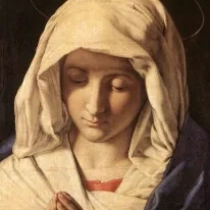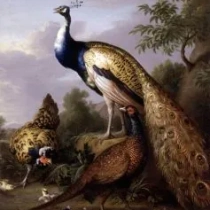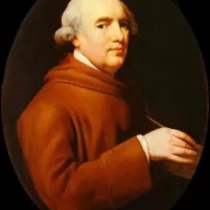Harvest At La Crau With Montmajour In The Background
Vincent van Gogh, a master of post-impressionism whose tumultuous life story often shadows the brilliance of his work, created "Harvest at La Crau with Montmajour in the Background" during a period of prolific output and intense emotional turmoil. This painting, a vibrant tableau of rural life under the Provençal sun, encapsulates Van Gogh's fervent desire to capture the essence of the landscape and the labor of those who toil within it. The composition, with Montmajour Abbey looming in the distance, offers a window into Van Gogh's soul, as much as it reflects the physical landscape of Arles, where he sought solace and inspiration in 1888.
The artwork is a symphony of color and texture, demonstrating Van Gogh's revolutionary approach to brushwork and his bold use of color. The golden hues of the wheat fields contrast dramatically with the deep blues of the sky and the verdant greens of the surrounding countryside, a palette that would become synonymous with Van Gogh's interpretation of the French landscape. This contrast is not merely visual; it is deeply symbolic, reflecting the artist's internal conflicts and his ceaseless quest for tranquility and understanding through the act of creation.
"Harvest at La Crau with Montmajour in the Background" is more than a landscape; it is a narrative of nature and human endeavor. The figures in the field, though small, are depicted with a sense of dignity and purpose, their presence a testament to Van Gogh's empathy for the working class and his identification with their toil. The painting's perspective draws the viewer's eye towards the ancient abbey, a sentinel of history and spirituality that stands in stark contrast to the transient beauty of the harvested fields. This juxtaposition speaks to Van Gogh's fascination with the temporal and the eternal, a theme that pervades much of his work.
Van Gogh's technique in this painting, characterized by thick, impasto brushstrokes, imbues the scene with a palpable sense of energy and movement. This tactile quality invites the viewer to experience the landscape as Van Gogh saw it, a living, breathing entity. His use of directional strokes to sculpt the form of the land and the sky creates a dynamic interplay between the elements, a visual metaphor for the artist's own turbulent emotions and his relentless pursuit of harmony through art.
In conclusion, "Harvest at La Crau with Montmajour in the Background" stands as a poignant reflection of Vincent van Gogh's genius and his struggle to find beauty and meaning in the world around him. Through this masterpiece, Van Gogh communicates not just the physical beauty of the landscape but also a deeper, universal truth about the human condition, the dignity of labor, and the eternal cycle of life and renewal. It is a testament to his enduring legacy as an artist who not only transformed the canvas but also deeply touched the hearts and minds of those who engage with his work.







No Comments Yet...